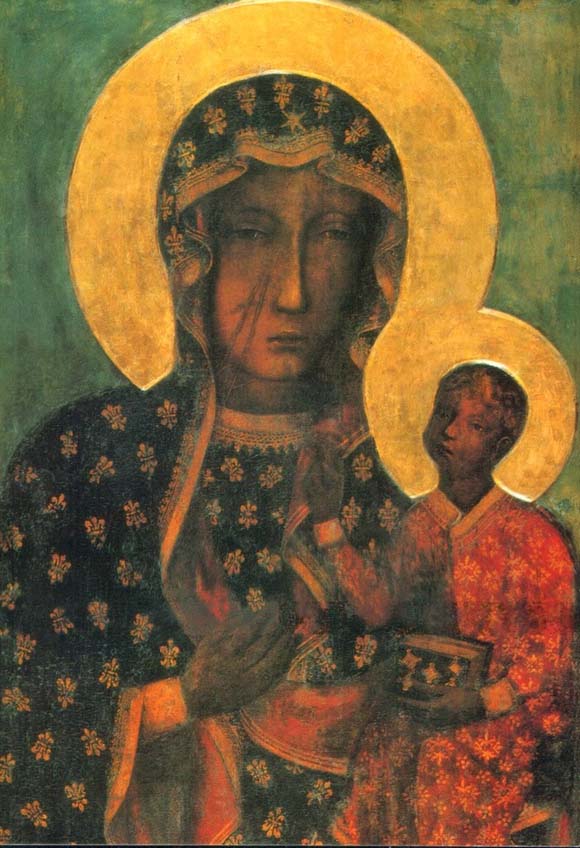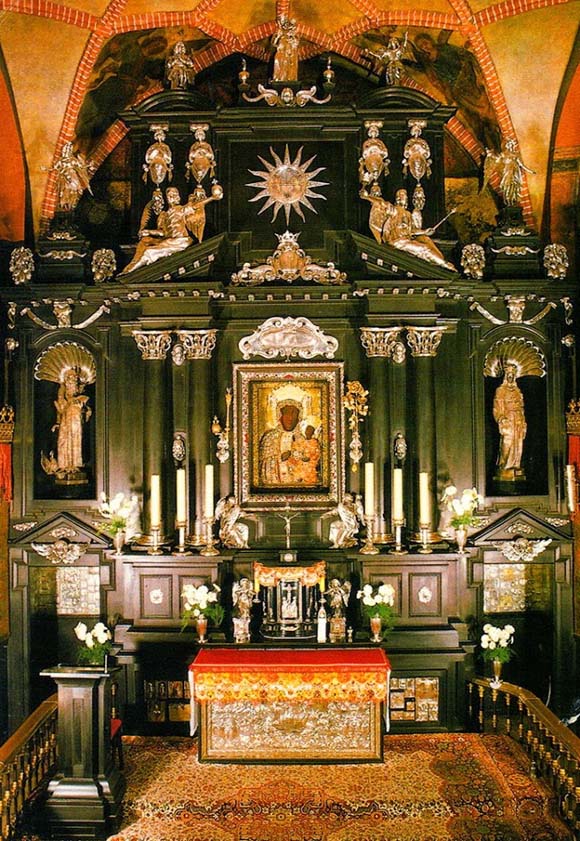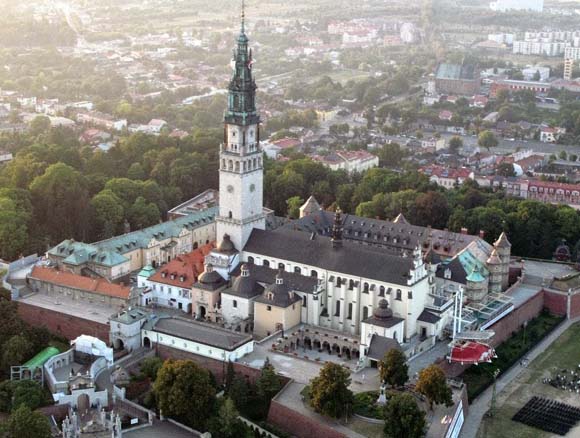
Our Lady of Częstochowa, Queen of Poland
 |
| Our Lady of Częstochowa |
Devotion to Mary, the Mother of God has had a special place in the Catholic faith in Poland. The most important Polish Marian shrine, where is the famous icon of Our Lady, is Częstochowa, called also Jasna Góra (Bright Mountain). The origin of this image is unknown with absolute certainty. It is a typical painting of Byzantine tradtion dating from 6th – 9th century. Nevertheless according to legend the icon was painted by St. Luke on a cedar table top from the house of the Holy Family. It was brought from Jerusalem to Constantinople and then from Constantinople to Red Ruthenia (Western Ukraine). The icon came to Jasna Góra in 1382 when Władysław (Ladislaus), Duke of Opole, had seen it at the castle of Bełz and acquired it. The image was already treated with great reverence and honoured. The Prince left the icon under the protection of the Pauline Fathers (Order of Saint Paul the First Hermit) whom he had brought to Częstochowa from Hungary. In 1430 took place a sacrilegious attack and the icon was demaged. It was carefully restored and repaired, but the marks left by the sword slashes could not be completely removed and two scars can still be seen on the right check of the Madonna.
 |
| The chapel with the image of the Madonna |
The portrait of Our Lady is black because of soot residue that discolors the painting. The soot is the result of votive candles and lights burning in front of the painting. For public view the holy icon is always presented in the chapel covered with a special and richly ornamented dress.
 |
| A view of the monastery at Jasna Góra |
One of the greatest victories took place in 1655. A Swedish invasion, called the Deluge, moved through Poland and their first defeat was at Jasna Góra when they were unable to take possession of the mountain and its buildings and they were forced to retreat. Next year following the victory the king of Poland, Jan Kazimierz (John Casimir) made a vow in the Cathedral in Lwów (Lvov) putting his country under the protection of Our Lady and declaring Her to be “Queen of the Polish Crown”.
 |
| The avenue leading to the shrine |
After Second World War Poland had been almost for fifty years under Communist system. Primate of Poland, Cardinal Stefan Wyszyński, who was interned for three years (1953-1956), wrote the text of the national vows that were to be a kind of renewal of the royal vows made by Polish king, on its three hundreth anniversary. On 26 August 1956 the acting president of the Polish Episcopate proclaimed the vows, known as Jasna Góra, Vows of the Polish Nation, together with pilgrims (about one million) gathered at Jasna Góra Sanctuary.
 |
| The basilica at Jasna Góra |
 |
| The shrine and the monastery at Jasna Góra |
Sorry, the comment form is closed at this time.



A Website Visitor
Beautifully written. Thank you.